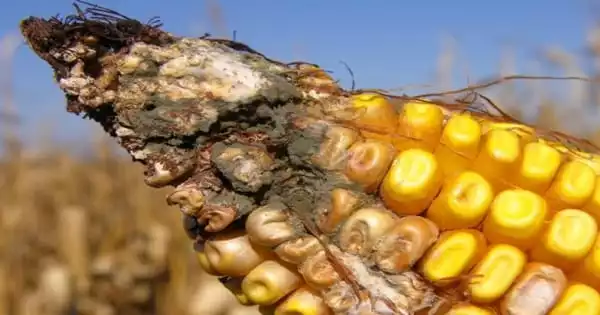Genetically Modified Rice (GMR) is rice that has been genetically altered using biotechnology techniques such as genetic engineering to introduce new or modified genes into its DNA. The goal of this process is to enhance the crop’s productivity, nutritional content, and resistance to diseases and pests.
Genetically modified rice could be key to tackling food shortages caused by climate change
- Reducing the number of stomata that rice have makes them more tolerant to salt water, according to researchers at the University of Sheffield
- As sea levels rise, seawater is reaching places it previously wouldn’t, causing increasing damage to crops
- Scientists from Sheffield had previously found that rice with fewer stomata is more drought tolerant, using up to 60% less water. Now, they have demonstrated that the same plants can also survive in salty environments
- Thirty percent of the world’s freshwater supply is utilized to cultivate rice, which is undoubtedly the most important food crop on the planet. It is consumed daily by 3.5 billion people
Genetically engineering rice to have better salt tolerance could allow it to be grown in places it would otherwise fail, new research from the University of Sheffield has found.
Rice is a hugely important food crop eaten by over half the world’s population on a daily basis. Ensuring that it can survive in harsher conditions caused by climate change will be integral to feeding a growing population that is projected to reach 10 billion in 60 years’ time.
Dr. Robert Caine
Climate change is causing sea levels to rise, and as a result, more and more areas of the world are experiencing seawater inundation, when salt water from the sea floods further inland and kills crops that can’t handle the increased salinity.
The most important carbohydrate on earth, rice is one of the hardest affected crops. 3.5 billion people depend on it every day, yet in nations like Vietnam, it is getting tougher and harder to grow because of rising seawater interference.
But, research from the University of Sheffield’s Institute for Sustainable Food has shown that rice may be made more salt-resistant by genetically altering it to have fewer stomata, which are microscopic openings utilized for water loss.
Most plants have stomata, which are apertures that control the release of water vapor and the intake of carbon dioxide for photosynthesis. Scientists from Sheffield discovered a number of years ago that rice plants can use up to 60% less water by having fewer and smaller stomata, which is extremely advantageous in drought-prone areas.
Along with these new findings, which were also published in the New Phytologist, those findings suggest that rice can be altered to thrive in harsher circumstances as a result of climate change, which will aid in the fight against global food insecurity.
Nevertheless, the researchers also found that lowering the size and quantity of stomata may make rice more difficult to grow in extremely hot conditions. As a result, various adjustments will be required to ensure that rice can grow as efficiently as possible in various nations and situations. For example rice with fewer, larger stomata, could be better suited to growing in extremely warm temperatures.
Dr. Robert Caine, Lead Author of the study from the University of Sheffield’s School of Biosciences, said: “Rice is a hugely important food crop eaten by over half the world’s population on a daily basis. Ensuring that it can survive in harsher conditions caused by climate change will be integral to feeding a growing population that is projected to reach 10 billion in 60 years’ time.”
“Our findings reveal how rice can be modified to grow as effectively as possible in different climates varieties of rice that have less stomata can survive with less water and in places with salt water. Meanwhile, natural rice varieties with fewer, bigger stomata are able to thrive in hotter temperatures.”
Studying 72 rice types, both organic and genetically modified, the University of Sheffield researchers collaborated with the High Agricultural Technology Research Institute (HATRI) in Vietnam. The greatest crop yielding dwarf rice cultivars will now be the subject of research to see whether they can be made more heat resistant.
















